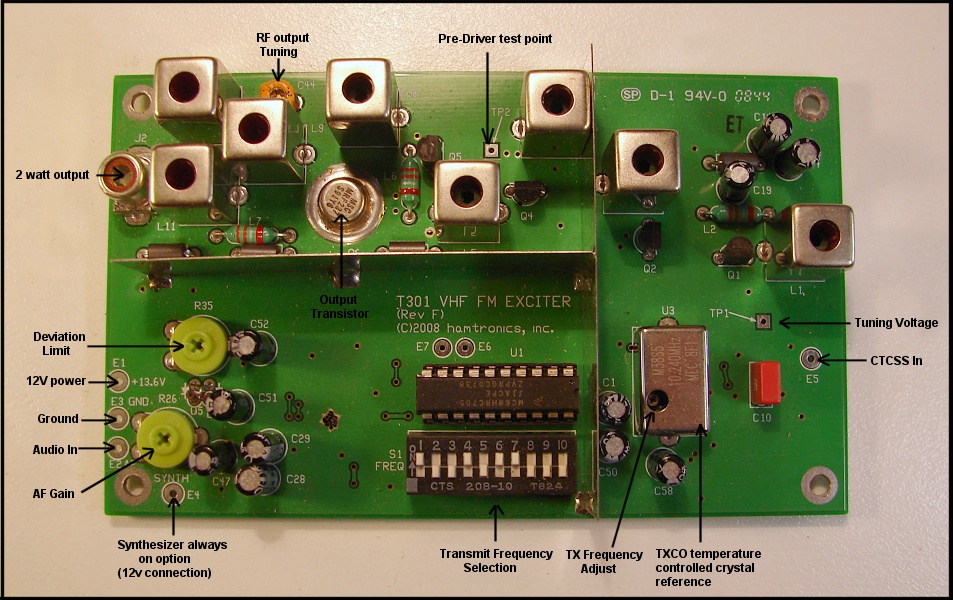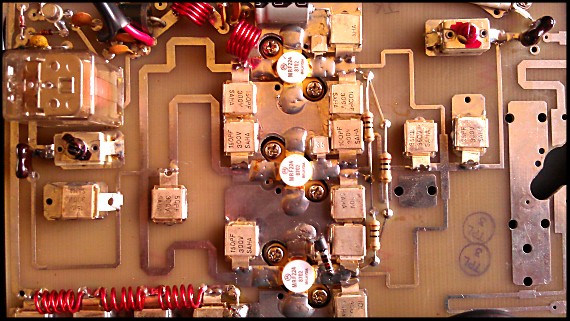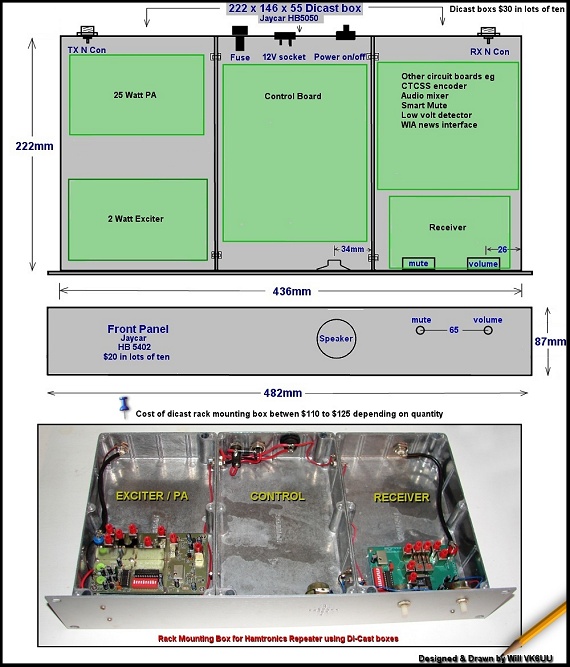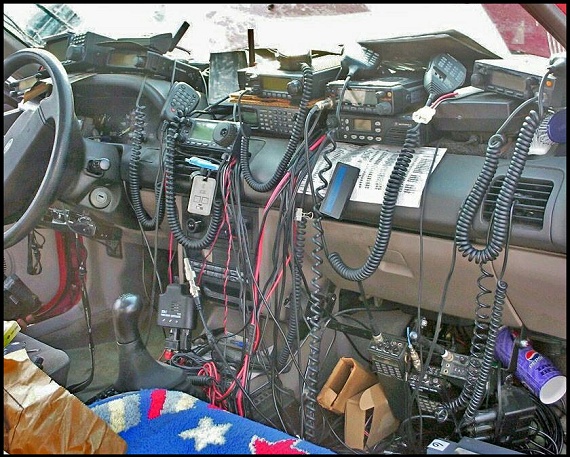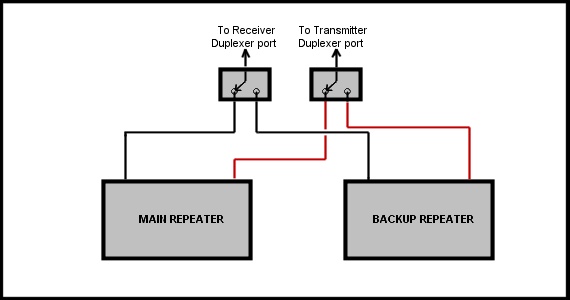I have been looking at other PA options.
For example Mirage make a large range of VHF and UHF power amplifiers.
Most are not for 100% repeater duty cycle operation, but in some
situations, the lower power PAs (25 watt) could be used with a little
extra cooling.
Have a look at their web site at...
http://www.mirageamp.com/
For example a 35 watt 2 metre PA that may work well with the Hamtronics
3 watt exciter is the B-34.

The B-34 35 watt power
amplifier for 2 metres. Web site link below.
http://www.mirageamp.com/Product.php?productid=B-34
It is not designed for 100% duty cycle, but with a fan or extra heat
sinking could work as a repeater PA, and the price is attractive. This
amplifier can be driven up to 35 watts, but if only driven to 25 watts
it should work okay with the 100% duty cycle needed by a repeater. This
amplifier could even be removed from its housing and the circuit board
mounted inside the exciter box along with extra heat sinking. There is
no antenna change over relay in this model, which is ideal for a
repeater, as repeaters do not use antenna change over relays. You are
not paying for something you would not use.
This information from Dion VK7DB re B-34 PA.
My B-34 arrived
today, first thing I did before powering it up was opening the
case. Not bad build quality for a MFJ product. Device is
2SC1946A. Reassembled and applied power and 4.7w drive from my
APRS transmitter. Measured power out is 37w on the Marconi
2955A. Continuous transmit for about 10 mins makes the heat sink
too hot to hold hand on for more than a few seconds. So, I
disassemble board from chassis and reattach to old 100w VHF aviation AM
PA heat sink and retest. Results are good, heat sink gets mildly
warm after extended duration. I check datasheet, device is good
for 20:1 SWR under 15v and 30w out, so looks good for repeater PA
use. More continuous transmission and it appears the TX/RX relay
gets stuck, so I removed and bypassed the relay, removed the power
switch and installed a ferrite choke in the switch wire position, added
a 220pf cap after it to ground in some vacant pads to maybe help with
decoupling, removed the power supply to the RF sensing relay switch
circuit. Another extended transmission shows good results, a
stable 38w for half an hour.
More from Dion VK7DB
My
Hamtronics receiver and exciter modules
arrived the other day.. I was keen to see how it went with the
Mirage
amp. I ordered some of the Hamtronics right angle RCA plugs, so I
fitted
one of those to the end of some RG316 and soldered the other end to the
pads on
the amplifier. Through an arrangement of adaptors and cables I
connected
the amp to the 2955.. Applied power to the exciter and amplifier
and the
2955 reported 35w. I left it transmitting, went to town, did some
other
things and came back about 6 hours later. Power reading was
34w.
Frequency stability is good, I aligned it to within 10hz of where it
should
have been and it was still there when I checked it.. There wasnt much
change in
ambient temperature, but the PCB around the output transistor on the
exciter
was quite warm, I thought this may have caused some drift..
I havent
checked the power out from the exciter,
I dont think I will, as I'm happy with the ~34w its producing now.
I connected the AF input to the PC sound card and played some WIA
broadcast
material through it, it sounds very good in standard form. I had
a
Repeater Builder AP-50 here, so I connected that to the CTCSS input on
the
exciter, set the deviation and the gain and set the splatter filter
cutoff at
about 5khz and it sounded better again. I think I will eventually
set it
to around 3 - 3.5khz. I added a Selectone ST-140 to the CTCSS
input on
the AP-50 and it modulates 67hz quite nicely too. The only
problem I can
find with it is there is some 5khz noise from the PLL on the TX, maybe
better
alignment and shielding will fix that.
I ordered one
of these http://www.ebay.com.au/itm/180750791789
It will fit nicely on the top of
a HB5050. Its 33mm high, the HB5050 is 55mm. 55 and 33 is
88mm,
which just happens to be the hight of a 2U rack panel.
Running the legal limit..!
I discovered the TPL amplifiers and read good reviews
about them, so thought I'd start looking for one. I found a
PA3-1FE mobile amp on eBay US. It cost me $180 delivered. I
then found a parts Unilab repeater for $66, so I wrecked it for the
heat sink. I had the local metal work shop fold up some new
panels from aluminium, basically duplicating the Unilab ones without
all the holes.. I assembled the panels onto the heat sink.
I put one of the Jaycar rack panels on the front to make it look nice
and to match the Hamtronics repeater..
Driven with about 45w from a mobile rig it makes better than
150w. I think with the 35w I'm
getting out of the repeater it'll make something near the legal
limit. Its going to increase output by a bit more than 5dB.
I'm going to bring the connections to the TX/RX relay coil out to a
connector on the rear panel through a temperature switch so that it can
be bypassed as needed or if it gets too hot, which I think will be
unlikely. It gets barely warm to touch after half hour of
continuous transmission. The 250w dummy load gets hotter than the
amp.. It doesnt have any bells and whistles, but its a lot
cheaper than some of the other options. Should be a good thing..
I have the amp running on the repeater now. It makes the legal
limit at 13.8V.
 120 Watts 2m PA
120 Watts 2m PA
I have a Celwave 250w? dummy load, and it makes that too hot to touch
after a broadcast.
120
Watts 2m PA
I also got one of these to get rid of voltage drops from the battery
box to the equipment cabinet on the mountain. It works well.
http://stores.tgelectronics.org/Detail.bok?no=10
I have a Friendcom FC-301D running as the UHF link radio on the
NHRC-4. It has a Repeater Builder AP50 and Selectone ST-140 in
there. I have 4 channels programmed and they are selectable with
DTMF remote. I used the WJ9J remote, it seemed to have more
features than the NHRC one and for a better price. I used an ESP
P26A delay on the link receiver.
http://sound.westhost.com/project26a.htm
No reason why this couldn't be used as the main delay. The
controller needs some bias added to the mute gate FET so that it works
correctly when the delay is added. I have 2 of the DTMF outputs
switching a 4066 in the link radio thats across the channel select DIP
switches. Output 3 is CTCSS RX enable. Output 4 is PA
enable. 5 and 6 are spare at the moment. I will probably use
output 5 to control the CTCSS encode duration on transmit, at the
moment it follows the RX mute. 7 is for PTT for sending tones,
but I will use that to mute the courtesy tone on the NHRC-4 and 8 is
the tone output from the remote. When an instruction is sent to
the the controller, it responds with a series of tones, high or low
indicating the state of the outputs. The courtesy tone gets mixed
with the DTMF remote tones and makes them hard to read, so if I can
mute the courtesy tone it will make it much nicer.
Its all coming together well.
Duplexer
Next thing is to tune my duplexer and make it all work..
On the subject of duplexers, I have 6 old AEA air band cans that I have
shortened. I discovered that if I make a BP/BR loop plate from
one of the originals and cap the spare loop plate hole, I can get 34dB
reject 600k from the pass. I connected 3 of those together and
was getting >115dB reject with about 1.5dB IL. Not bad for the
price! Biggest expense has been the silver plated N type T
adaptors and piston trimmers from the US. The rest of the bits
were given to me, the cans, RG214, lathe work all free.
This duplexer will go on the repeater at the other end of the UHF
link. We will probably run a Unilab on that one.
Dion VK7DB
Mirage do make much higher power amplifiers, up to and above our legal
limit of 120 watts, but once again they are not designed for 100% duty
cycle. However they do make a repeater version. For example the
B-1018-R requires 3 to 4 watts in for 120 watts out. Ideal match to the
Hamtronics exciter.

The repeater version of high
power PA...Lots of heat sink
http://www.mirageamp.com/Product.php?productid=B-1018-R
The Australian Price from ATRC (Amateur Transceiver radio Centre) is
$649.
The ATRC web site is.....http://www.atrc.com.au/index.html
Now there are not many sites that we would want or need to run the full
limit, but perhaps our main repeater, VK6RAP-2m would be one that such
power could be tried.
Bands
other than 2 metres
The Mirage range also includes 6 metre and
70 cm power amplifiers. Remember the Hamtronics option gives us
identical repeaters on all bands and the same options for add on power
amplifiers.
The 6 metre repeater at Roleystone is a possible example of running
higher power. 6 metres is a noisier band for mobile operation. 120
watts out of the repeater would go a long way to reducing receiver
noise in the mobile. Mirage make a 6 metre repeater version, the same
as the 2 metre version for the same price.
Linking
The
Hamtronics option also provides our linking equipment. 70cm links could
be the basic 3 watt output for short hop links, or 25 watts for longer
distances. Even power levels above 25 watts could be employed.
Control
Board
So far the discussion has only been about
the RF part of the repeater. The control board can be as simple as
possible, or as complex as you want, with many functions. The basic
requirement of the control board to meet our licence obligations are....
- Transmitter time out, with a
maximum of 10 minutes.
- Identification, Morse or
voice.
These are fairly easy to
provide, however some form of remote control and interface to other
systems for linking are requirements worth including.
There are many repeater controllers and all would interface with the
Hamtronics receiver and exciter, as the interface is simple. So our
choice of repeater controller can be any we choose. We could have
different controllers for different sites. The options are very
flexible and don't impact on the RF side of the repeater.
Shown below is how simple it can be to interface a Hamtronics receiver
and Hamtronics exciter to a repeater controller, such as the NHRC-4,
for
operation as a repeater with carrier tail, identification and time out.







